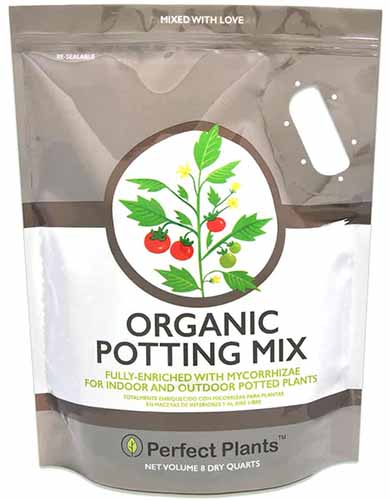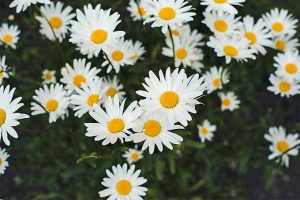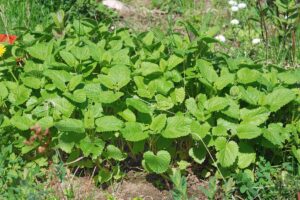Lemongrass is a versatile herb cherished for its refreshing citrusy scent. Its aroma is akin to a zesty lemon with delicate hints of floral and earthy undertones.
Apart from its use in cooking, this herb is used in herbal remedies for its medicinal properties and the essential oil is used to add fragrance to cosmetics.
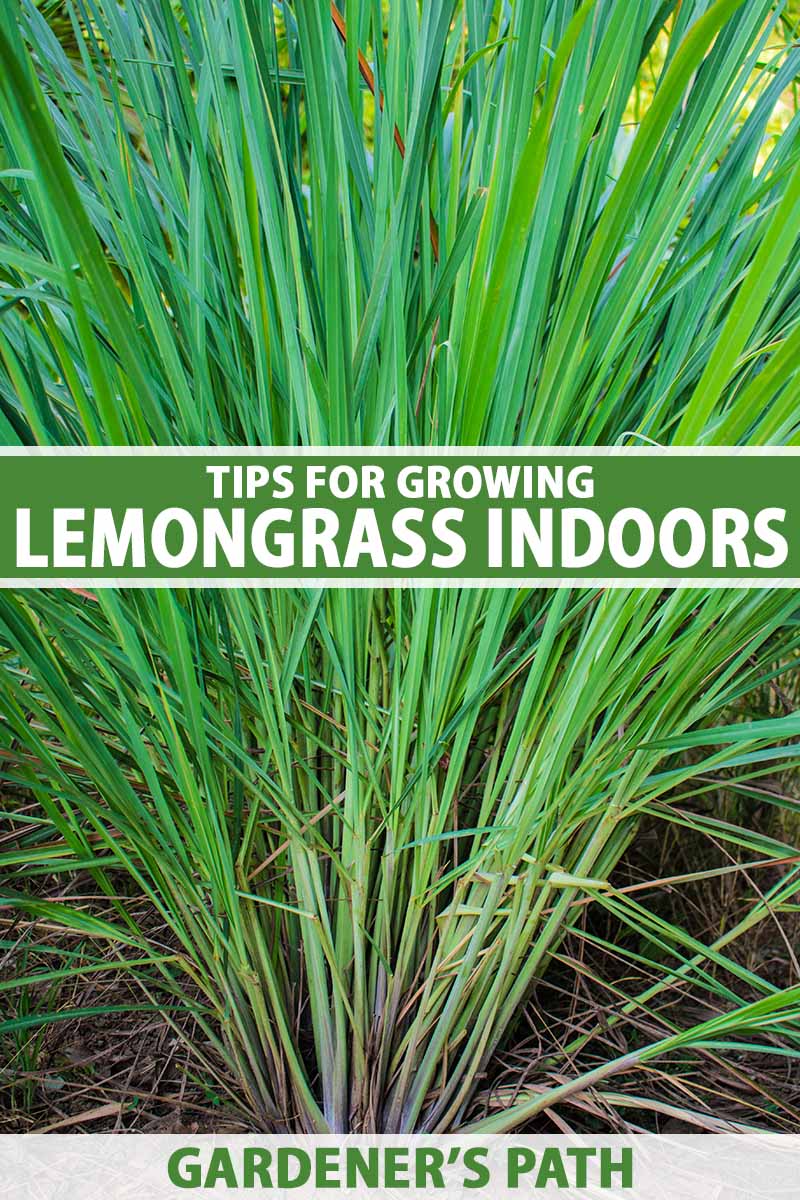
We link to vendors to help you find relevant products. If you buy from one of our links, we may earn a commission.
When people speak of lemongrass they are usually referring to one of two Cymbopogon species, C. citratus (West Indian) and C. flexuosus (East Indian). C. citratus is the species most commonly used in cooking.
With both species being tropical, you may wonder if you can grow lemongrass indoors. The answer is, absolutely! And what’s even better is that you can grow this herb year-round under the right conditions.
In our guide to growing lemongrass, we discuss how to cultivate this herb in your garden. In this article, we’ll talk about how to keep your plant thriving indoors.
This is what we’ll cover:
What You’ll Learn
Lemongrass 101
Lemongrass is a tall, tender perennial grass originally from India and the tropical regions of Asia, now cultivated worldwide.
This plant has elongated, slender foliage that typically reaches a height of three to five feet, with leaves that have a grayish-green hue.
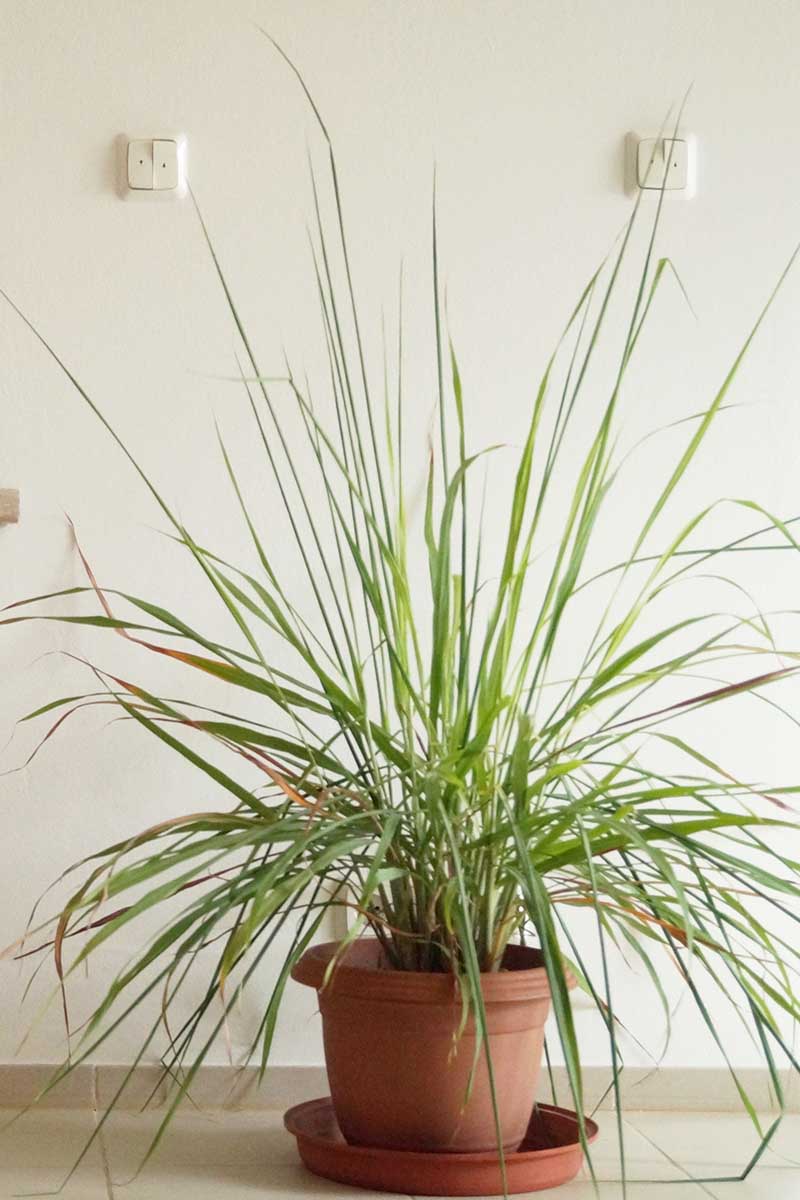
In cooking, the part that is typically used is the lower sections of the stalks, specifically the tender white and light green parts.
While lemongrass is technically a tender perennial, it is commonly grown as an annual in cooler climates. It flourishes as a perennial in USDA Hardiness Zones 8 to 11.
Indoors, the plants prefer a minimum of six hours of bright sunlight from a sunny window or through the use of supplemental light sources – such as cool white fluorescent or LED lamps for 12 to 16 hours a day.
Lemongrass grows in a wide range of soil types but prefers moist soil with good drainage. A pH of between 6.5 to 7.0 is ideal, but anything between 5.0 and 8.4 will be tolerated.
The plants will tolerate temperatures ranging from 50 to 91°F but ideally require temperatures between 77 and 85°F.
Getting Started
Let’s look at what you need to get started growing your own lemongrass indoors.
Choosing a Container
I have some great news to share. This plant is very easy to grow in containers!

If you are reusing a container, it’s important to ensure it is thoroughly cleaned and sanitized to prevent the potential spread of unwanted pathogens.
Begin by washing the container with soapy water, and then prepare a solution of one part bleach and nine parts water, creating a 10 percent solution, and use this to wipe out the inside of the pot.
You’ll need a pot that’s at least 12 inches in diameter to allow room for the plant to grow and mature. Make sure that it’s got adequate drainage holes in the bottom, and you’ll need a saucer to go underneath it to catch the water.
Keep in mind that you can use smaller containers of six to eight inches in diameter and depth, but as the plant matures, you’ll need to give it space to spread out.
Soil
Lemongrass needs fertile, well-drained soil. You can use a commercial potting mix that offers equal parts of peat moss, perlite, and potting soil.
If you are in need of a recommendation, Perfect Plants sells an eight-quart bag of organic potting mix that provides a blend of coconut coir, mycorrhizae, organic worm castings, perlite, sphagnum peat moss, and composted pine bark.
This provides the ideal potting medium for your lemongrass.
Propagation Tips
Lemongrass can be propagated from seed, by division, via cuttings, or from nursery starts. Let’s take a brief look at each method:
From Seed
To start your seeds, you can either choose to use small pots or a seed tray and then transplant the seedlings, or you can sow directly into your permanent container.
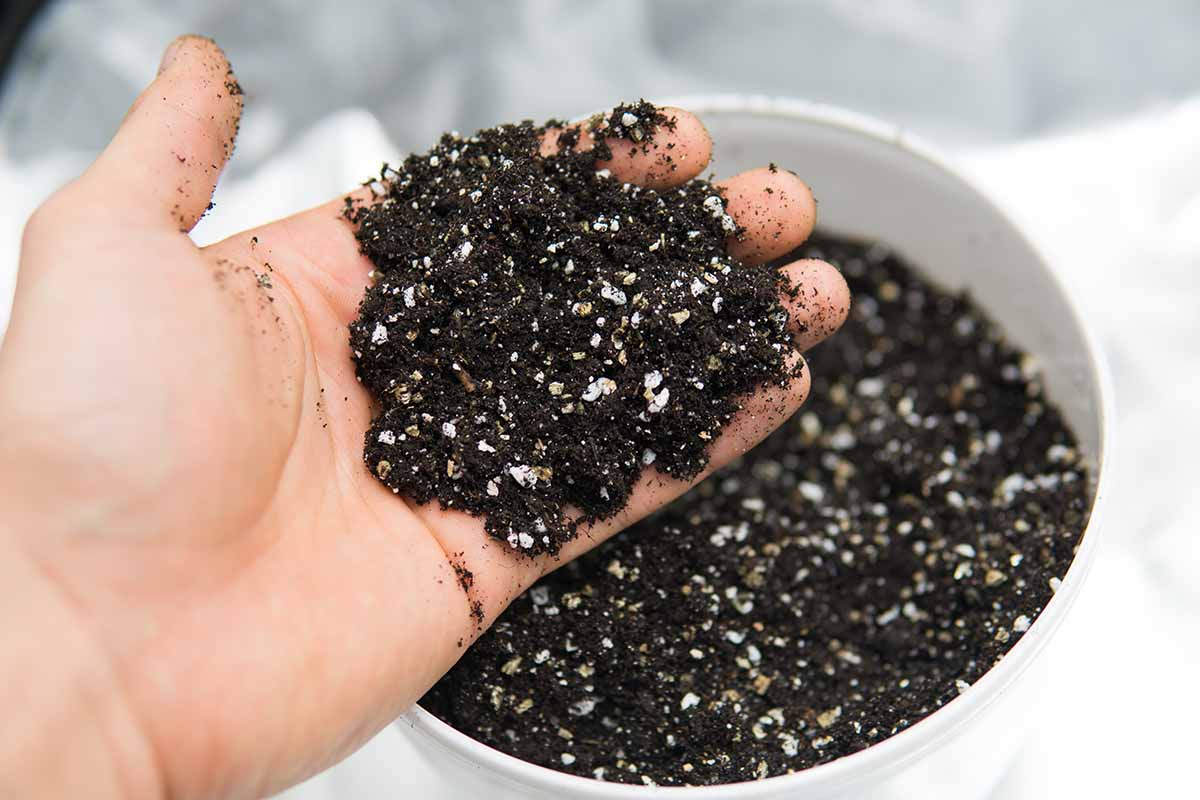
If you are starting with seed trays, sow two seeds on the surface of the soil in each cell and gently press them into the soil.
If you’re sowing seeds directly into your permanent container, sow seeds six inches apart as you’ll thin them later. Keep in mind that you need one plant in a 12-inch container.
Be careful not to sow the seeds too deep as they need light to germinate.
Place your seed tray or container in a spot that has bright, indirect light and temperatures of about 75°F. The soil needs to be kept warm, so if necessary, you can use a heat mat.
Keep the soil evenly moist, but not waterlogged and be careful not to dislodge the seeds when watering.
Expect germination in seven to 21 days.
As your seedlings mature, thin them out, leaving one healthy plant per seed cell or in your permanent container.
After about four to six weeks, the seedlings should have a few true leaves and be at a size where they can be handled and transplanted without damaging their roots.
At this point, if you used small pots or seed starting trays, you can transplant them into their permanent container homes.
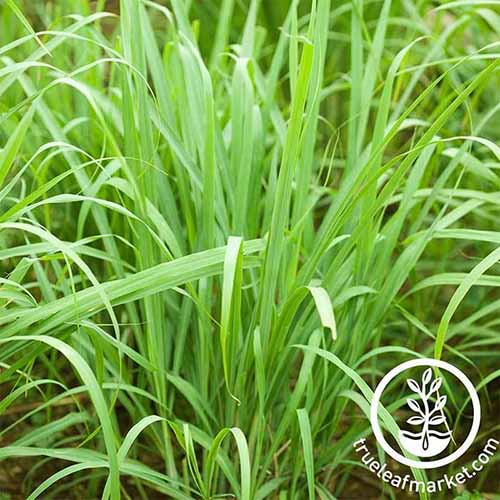
If you need some lemongrass seeds, you can find packets of C. citratus in a variety of sizes available at True Leaf Market.
From Cuttings
If you have an existing lemongrass plant, you may be interested in propagating from cuttings – and the process is relatively simple.
Begin by cutting a healthy stalk about an inch above the soil level, ensuring the base remains in the ground for regrowth.
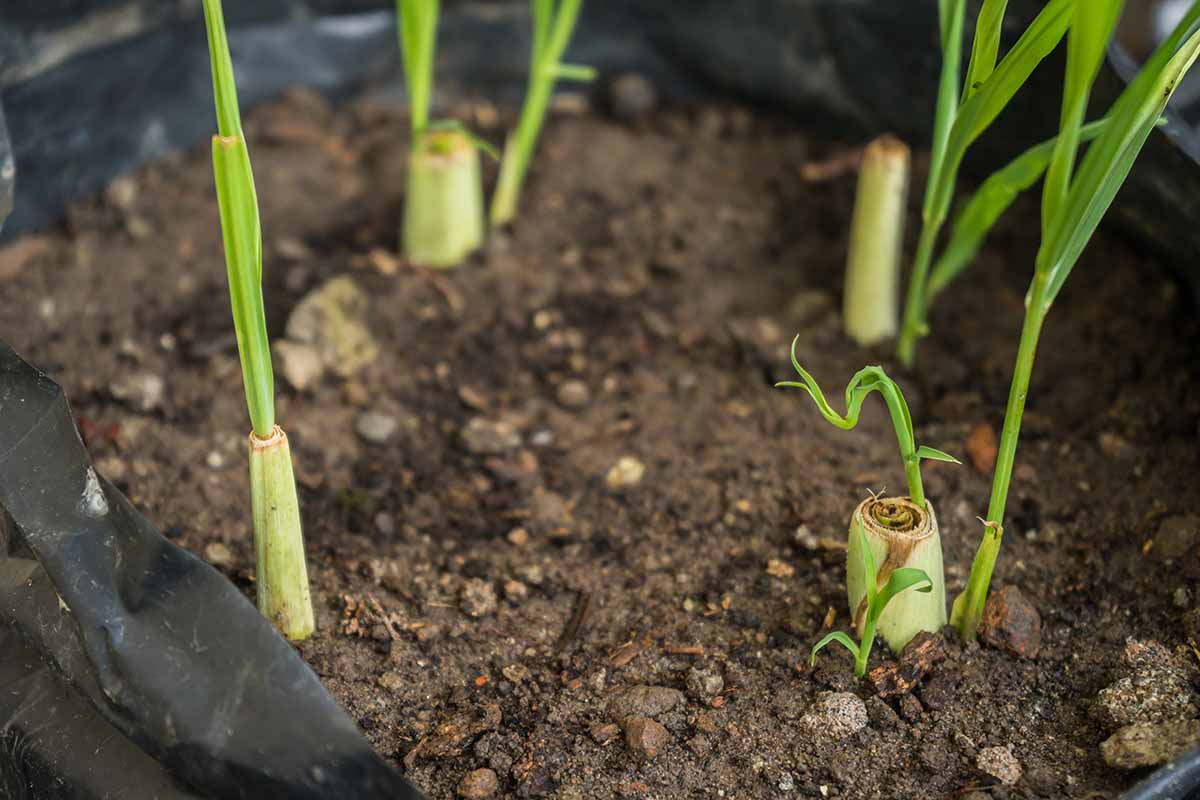
The upper portion of the stalk should be cut off, leaving around three to four inches of the bottom section of the stem.
In case you don’t have access to a mature plant, you can find stalks available in your local grocery store or Asian market. By choosing ones that have at least three to four inches of the lower section intact, you can root cuttings from these.
After you have your cuttings, place them in a glass of water with the bottom inch of the stem submerged.
Be sure to change the water daily to keep it fresh. You’ll start to see roots developing within about a week, and after two to three weeks, these roots will be robust enough for you to transplant into your permanent container.
By Division
If you already have a mature plant, you can divide it and pot up the divisions to grow indoors.
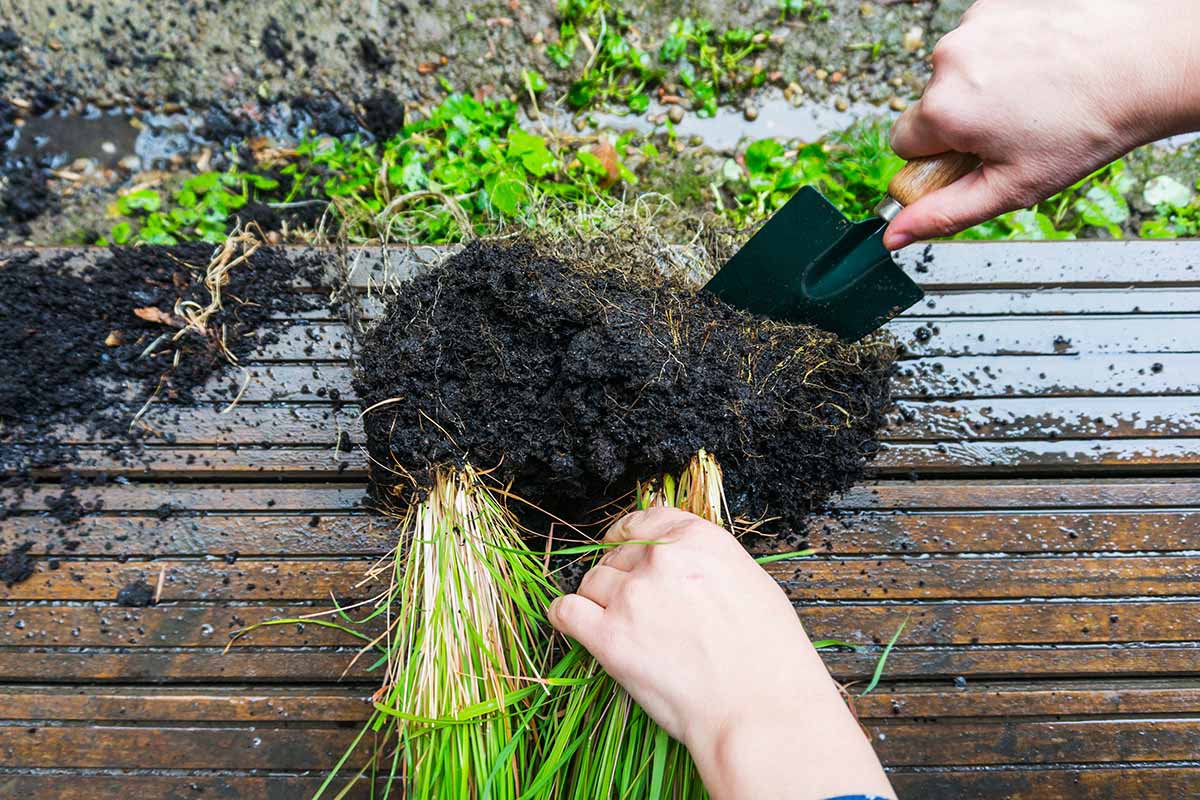
To divide, you’ll need to gently separate some stalks from the main clump. One method is to firmly grasp a stalk and pull it until it separates from the rest.
If the roots are tightly entangled, you may opt to use a knife to carefully cut through them, ensuring that each divided section retains some roots for replanting.
Another approach is to dig up or unpot the whole plant and then separate the stalks using your hands or a knife. It’s important that each division contains at least one stalk with intact roots.
Once you’ve completed the separation, plant the divisions in your desired container.
Nursery Starts or Seedlings
The easiest way to get started is to purchase nursery starts from a garden center.
Begin by selecting a suitable container as discussed above, and filling it with your chosen potting mix, making sure to leave approximately an inch of space from the top to accommodate watering.
It’s good practice to pre-water the young plants a few hours before transplanting, which can help minimize the stress they experience during the process.
Carefully extract the plant from its original container, paying special attention not to disturb the root system.
If you encounter tightly bound roots, consider using a knife to gently score the root ball, encouraging the roots to spread out and establish themselves comfortably in their new surroundings.
Next, create an appropriately sized planting hole in the potting mix of the prepared container. This hole should be slightly larger than the root ball of the seedling.
Place the seedling or nursery start into the hole at the same depth it was growing previously. Then, fill the hole with a potting mix and gently compact it around the root ball to eliminate any trapped air.
After transplanting, provide the lemongrass with a thorough watering to help it settle into its new environment.
Finally, position the container in its intended location, ensuring that it receives the required amount of light.
Growing Lemongrass Indoors
Selecting the right location is key to ensuring this herb grows and thrives.
You can position your pot near a window with a southern, southwestern, or eastern exposure to guarantee the plant soaks up a generous amount of sunlight.
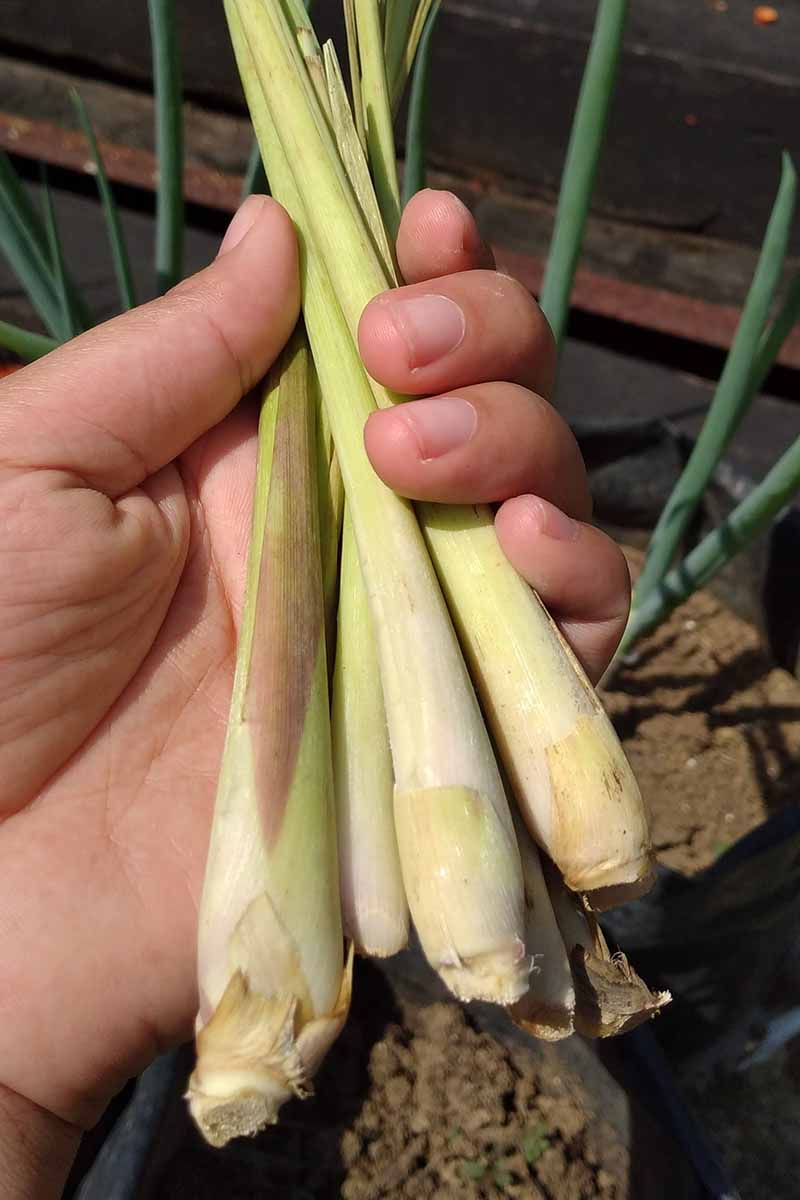
Placing it on a sunny windowsill is an excellent way to maximize the natural light available. Alternatively, consider using a plant stand or elevate it on a plant shelf to provide the light it craves.
For those passionate about cooking with fresh, zesty herbs, somewhere in the kitchen is a convenient location. It grants easy access to the fragrant leaves and stalks whenever your culinary endeavors require that special touch.
If you are fortunate enough to have a sunroom or glass-enclosed space, that would be a perfect spot for your lemongrass.
Water Needs
As stated earlier, lemongrass prefers consistently moist but not waterlogged soil. To achieve this balance, wait until the top inch of the soil feels dry to the touch before watering.
When it’s time to water, apply water at the base of the plant rather than overhead, as keeping the foliage dry helps prevent potential pest and disease issues. Be mindful not to overwater.
After watering, be sure to empty any excess water that has collected in the saucer. Allowing the saucer to accumulate standing water can lead to overwatering and root rot.
The goal is to maintain the soil’s moisture level similar to that of a well-wrung-out sponge.
Fertilizing
Like other grasses, lemongrass plants require a lot of nitrogen during the growing season.
Fertilizing container-grown lemongrass with a half-strength solution of a balanced, liquid fertilizer on a weekly basis during the growing season can do the job.
In addition to regular fertilization, you can also add a layer of compost or worm castings to the soil’s surface every few weeks.
This helps ensure the plants receive a steady supply of essential nutrients.

Jack’s Classic Balanced Fertilizer
Jack’s Classic all purpose 20-20-20 water soluble fertilizer is an ideal choice and it’s available at Amazon.
Pests and Disease
This plant is a hardy crop that is resistant to most pests and diseases when grown in suitable conditions.
In fact, the essential oil derived from this herb is sometimes incorporated into mixtures aimed at deterring insects. But if there are any chances this herb will have a run in with a pest indoors, it will be likely be with spider mites.
These pests have a piercing feeding method, extracting plant cell contents, which leads to the appearance of small yellow or white speckles on the foliage.
To address this issue, you can use an insecticidal soap, or dislodge the pests by spraying the plant forcefully with water. You’ll want to move your plant outdoors or do this in the bathtub.
You can learn more about dealing with spider mites in our guide.
Leaf blight is a potential disease you may encounter, caused by various fungi. If you notice reddish-brown spots forming on the tips and edges of the leaves, you should remove the affected foliage.
Harvesting and Preserving
Lemongrass can be harvested at any time, once the stalks have reached a quarter to half an inch in diameter. To harvest, cut the stems at the base, leaving some of the plant for regrowth.

Keep the “one-third rule” in mind, which means avoid harvesting more than one-third of the plant at once to support ongoing growth.
Both the stalks and the leaves can be used for cooking. The stalks are quite hard, so they are usually mashed or cut into three- to five-inch sections and used in sauces to provide flavor, then removed before serving.
Stalks can also be crushed and placed in the bottom of foil wrappings with meat or vegetables. Once cooked the tender interior core can be sliced and used in a variety of dishes. The leaves may be used to flavor teas, soups and sauces.

Dry leaves in the sun or oven and use them like bay leaves in soups and teas. Lemongrass can also be frozen for later use.
Year-Round Lemongrass
By following these steps and guidelines, you can enjoy the refreshing essence of lemongrass throughout the year. In this guide, we’ve covered everything you need to know!
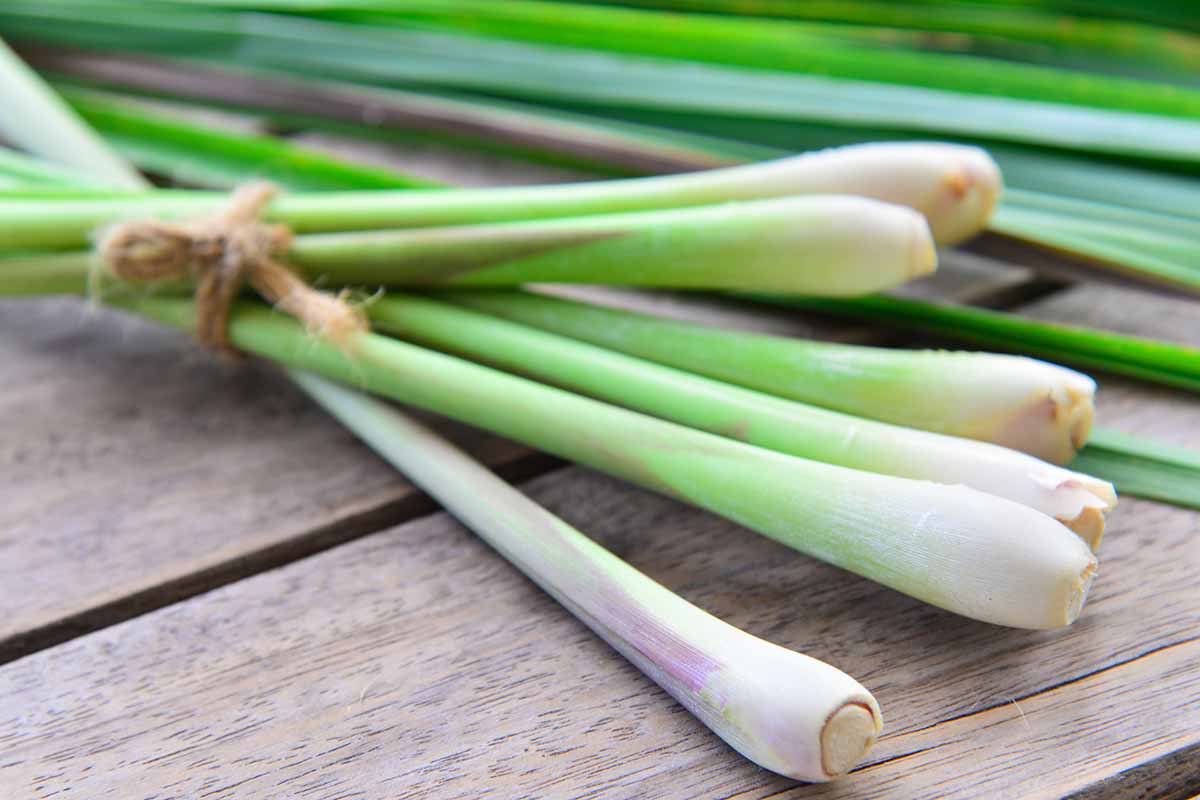
We discussed how to get started, explored different propagation methods, and learned how to nurture the plants indoors.
Finally, we talked about how to harvest and preserve this delightful herb. Armed with this knowledge, you’re ready to grow and enjoy lemongrass year-round.
Have you grown or are you interested in growing lemongrass indoors? If so, please feel free to share your comments with us below.
If you would like to learn more about how to grow herbs, you might be interested in reading these articles next:
